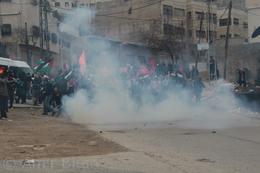In the middle of Israel, between the city of Lod (Lydda) and the city of Ramla (Ramle), several hundred Arab citizens of Israel live an unrecognized village, Dahmash.
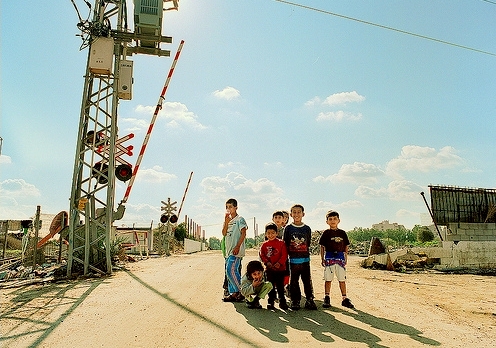
Officially, the place does not exist: No electricity, no health services, public transport, rubbish removal, or sewage. And they live under constant threat of demolition and eviction. It is clear that the authorities want them out. Here as elsewhere, nationalist discrimination is combined with prospects of huge profits for real-estate developers. Since January 2010, demolition seems eminent. Internal colonialism is not yet history in Israel; it’s a reality that its own Arab citizens face.
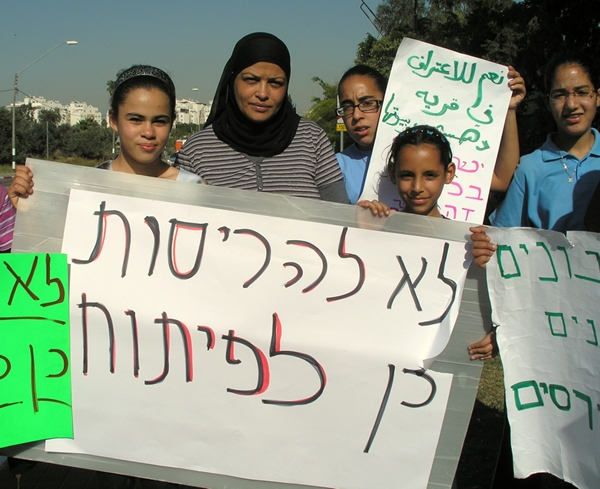
A protest tent has been constructed at the entrance to the village and a group of the village’s women are holding a daily protest watch in a bid to save their homes. Tarabut activists has taken up to support their cause: to stop the demolitions and work toward achieving full recognition for Dahmash.
The land in Dahmash is under the private ownership of the residents. Some families came to the village in 1951 after receiving the land as 'compensation' for land they lost when fleeing their own villages during the 1948 war. The size of the land they were allocated was calculated at 15% of the original land they had owned, as was the customary 'compensation rate' at the time. The origin of the families is divers: the Abu-Kishk family, for example, comes from the Ra'anana area; the Isma'il family is from the non-existent Palestinian village Qatarah (near Gedera), Sha'aban family is from Bissan (Beit Shean) and other families are from the Negev area in the south of Israel – Bedouins who had lost most of their lands after 1948. Other families bought their houses from people who stayed in Ramla after the 1948 war.
The land was registered as an agricultural land which meant that only small agricultural constructions could be built on it. There were, however, existing houses the families were allocated. Later on families from the adjacent city of Ramla were relocated to the area as a result of the severe housing shortage there.
The village maintained some sort of a Status Quo with the municipality: the residents did not insist on their due municipal services, and the municipality, in turn, left the residents alone. To this day, Dahmash does not receive any municipal services such as electricity, health, public transport, rubbish removal, sewage and planning. In the Population Registry, the residents’ real address in Dahmash is not specified. They are invisible, one of the many 'unrecognized' Palestinian settlements in Israel.
To enable their children to attend school, the residents had to register in the city of Ramla, and to endure and fight (successfully) numerous decisions by the Ramla municipality to ban their children's participation in the education system on the grounds that the village is not part of the Ramla municipality (the area has been artificially excluded and placed under the jurisdiction of the Emek Lod Regional Council). A year earlier, in 2005, Israel’s Supreme Court has overruled a decision by the Ramla municipality to stop school transportation for the children of Dahmash.
During the years, numerous attempts by the residents to change the agricultural status of their land were rejected. Although large areas around them were subsequently made available for housing (just recently, Ramla mayor Joel Lavie succeeded in de-freezing 140 acres bordering Dahmash), the municipalities have never agreed to follow procedures to allow housing development and legalize the existing structures. The construction activity in the area, however, is continuing and large neighborhoods were built on registered agricultural land; some of Israel’s largest construction entrepreneurs have made their fortune building on these areas. One should only think about the shady deals of David Appel, a protégé of Ariel Sharon, who was suspected of having intervened on his behalf to secure his deals in the Ramle-Lod Area. Residents of Dahmash suspect that some large-scale profitable construction plans are behind the recent attempts to expel them from their village.
Until 1984, Dahmash land was defined under program R6 in the District Master Plan, allowing limited housing development in agricultural land. In 1984, however, the land was redefined as "declared agricultural land". This strict definition prohibits any housing development. (Incidentally, the village's water allowance was cut back a few years ago, rendering any agricultural venture in the area impossible.)
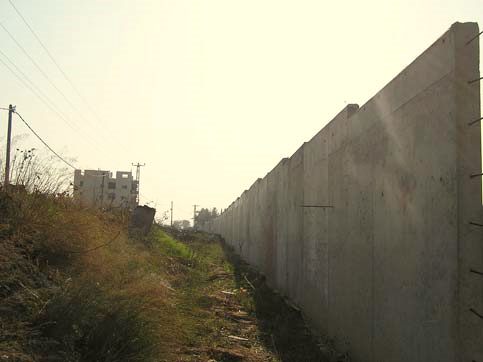
The neighboring Jewish village of Nir Zvi, was also defined as R6 but its land definition has never been changed. Nir Zvi has become a residential area, a prestigious, prosperous and well-maintained community whose Jewish residents come from the middle and upper classes. To set itself apart from another poor Arab neighborhood on its other side, its residents constructed their own separation wall in 2003.
Dahmash residents have been trying for years to modify their land’s definition and allow housing development in the village. They have prepared a detailed development plan for the village, helped by the Arab Centre for Alternative Planning, but the District Planning and Building Committee has not discussed it. The residents turned to every possible government or judicial body to make the Planning Committee – controlled by the government – to discuss their case. To no avail. The residents of Dahmash live under constant threat of demolition.
In January 2008, a ruling by an Israeli court suspended demolition orders issued by the council until an alternative solution can be found. Judge Sarah Dotan resolved, in response to a petition by the village residents, that the demolition orders should be suspended pending the implementation of the proposed development plan. The judge maintained that "the definition of the village's land as agricultural land is not 'a decree from heaven' and can be changed”. This ruling nurtured the hopes of residents of Dahmash and many in Israel who support their cause that justice can be done.
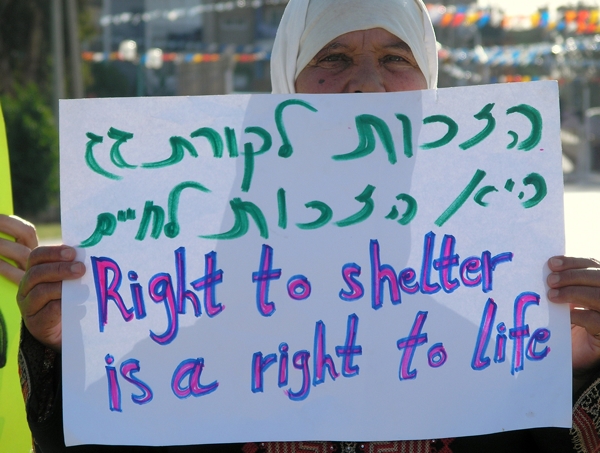
Two years later, the Planning and Building Committee has still not considered the development plan proposal as requested by the judge. In January 2010, the Regional Council decided to ignore the court ruling and is now acting to set 13 houses off for demolition. Visits by army and police officials together with representative of the council set to put the orders in motions.
This is where the residents of Dahmash stand. Through Joint Arab-Jewish protest since January, they have managed to gain precious time, to postpone the implementation of the demolition orders and get the Planning and Building Committee to discuss the plan they have submitted. But we cannot yet be optimistic.
- The Report in French: Menace de démolition à Dahmach

